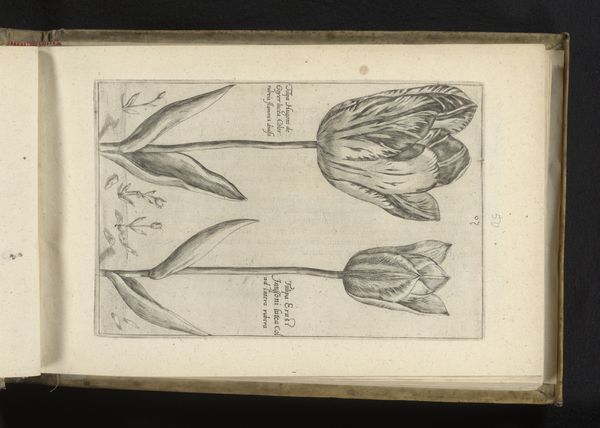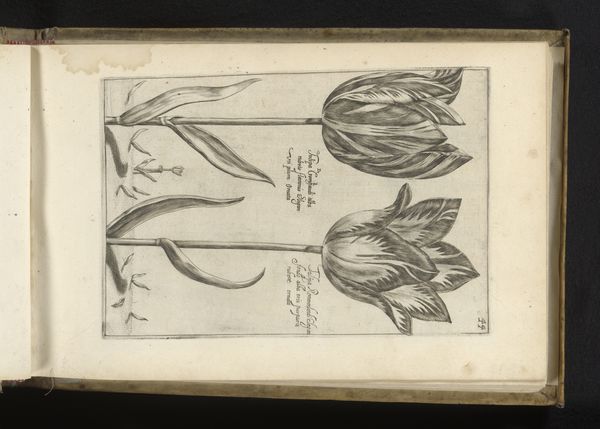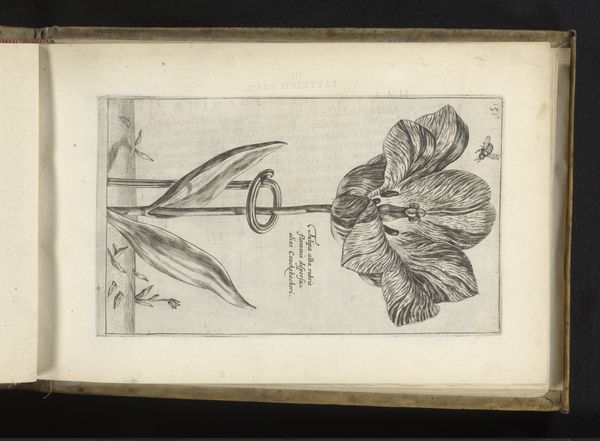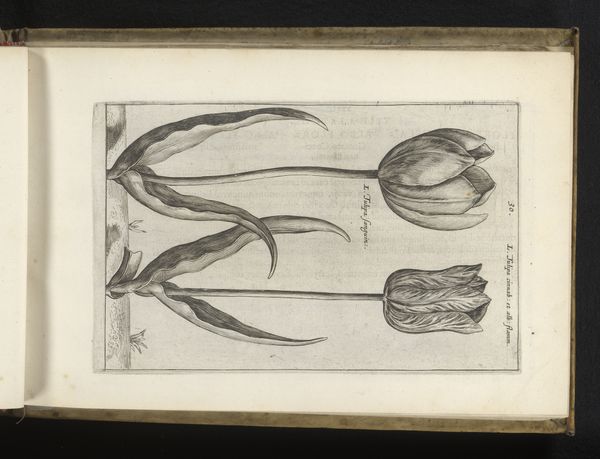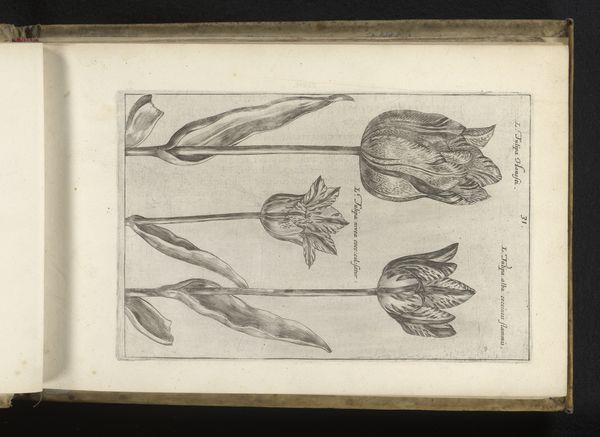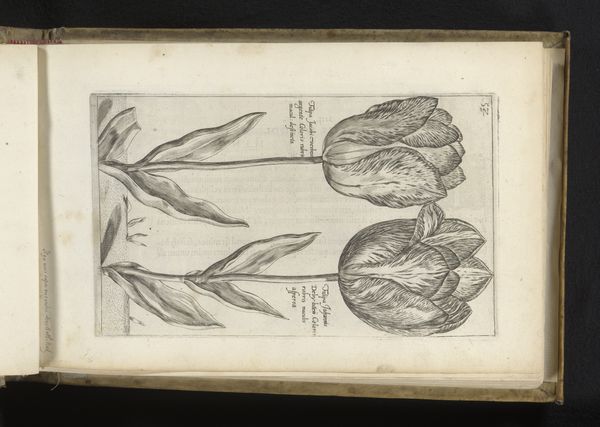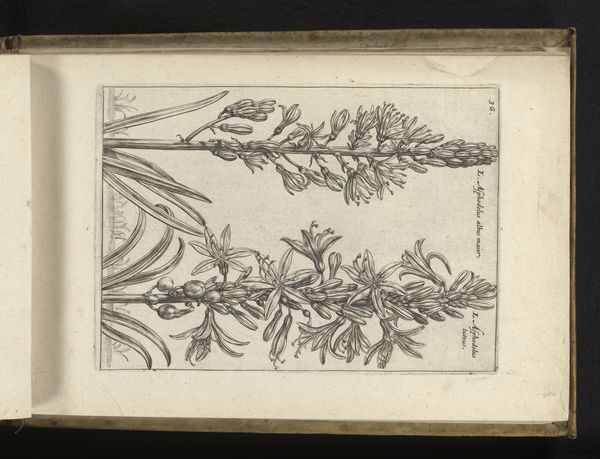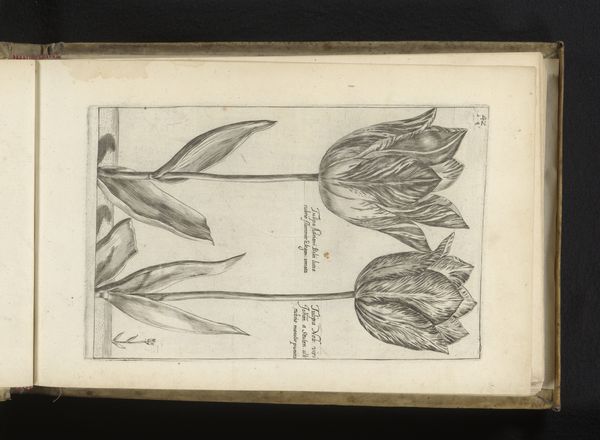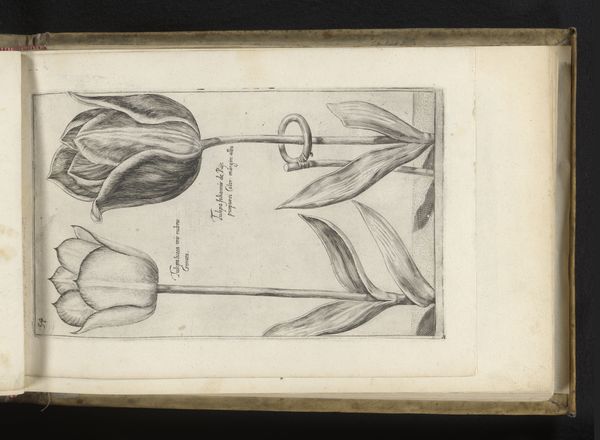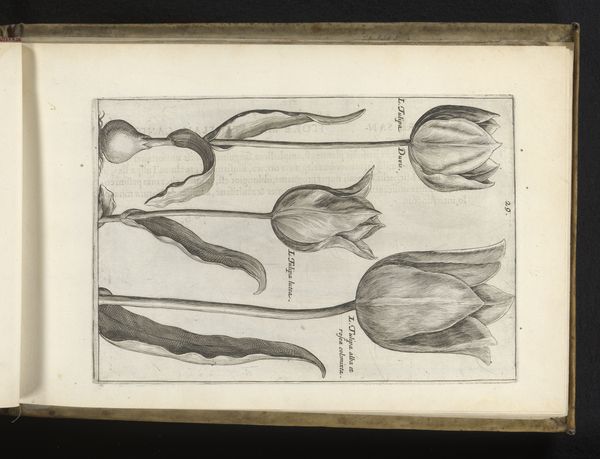
drawing, print, paper, ink, engraving
#
drawing
# print
#
flower
#
figuration
#
paper
#
ink
#
flemish
#
line
#
northern-renaissance
#
engraving
#
realism
Dimensions: height 218 mm, width 143 mm
Copyright: Rijks Museum: Open Domain
Curator: This engraving before us, "Twee meerkleurige tulpensoorten," which translates to Two Multicolored Tulip Varieties, was rendered by Crispijn van de Passe the Younger in 1617. Editor: Even in monochrome, there’s a certain drama. The meticulous rendering of each petal, with its varied striations, captures a sense of vibrant movement despite the static medium. The scale is also striking; these are tulips presented as grand subjects. Curator: Indeed. The lines themselves are incredibly precise, achieving an almost photographic realism. Van de Passe’s technique skillfully utilizes hatching and cross-hatching to define the forms of the tulips and create the illusion of three-dimensionality, wouldn’t you agree? Editor: Absolutely, and in observing its creation and the era it represents, the early 17th century saw what's called "Tulip Mania." These were speculative assets, as prized for the image they conjured as the thing themselves. Think about that impact and investment baked into the final piece, an era of Dutch commerce represented in a single engraving. Curator: A pertinent point. Tulip Mania encapsulates a fascinating, if somewhat irrational, moment in economic history, and art like this actively participated. It seems there is also a great degree of naturalistic attention here. The plants look like specific varieties being faithfully documented, as a Northern Renaissance illustration would present. The botanical drawing became infused with social significance as they visually fueled financial fervor. Editor: In some ways, this print immortalizes not only the flowers, but also the societal phenomenon surrounding them. Consider that for an ordinary citizen, they may be just seeing art rather than accessing the extremely expensive flower that grew during that period. How was that class divided mediated, even fueled, by images like this? Curator: It provides a sharp commentary. The formal composition further enhances our reading; the placement of each flower variety mirrored across the picture plane almost elevates them to the status of royal portraits! This may reveal even the artistic agency and complicity of printmakers of the era as it documents the speculative moment. Editor: Thinking about van de Passe's work, it certainly makes you consider the strange ways that commerce and art intersect. Images aren't always neutral; they help shape perceptions and ultimately drive value. Curator: And that delicate, structured realism provides more than simple information. There's genuine visual skill at play within the context of a crucial moment in Dutch commerce history. A complex piece, definitely.
Comments
No comments
Be the first to comment and join the conversation on the ultimate creative platform.
